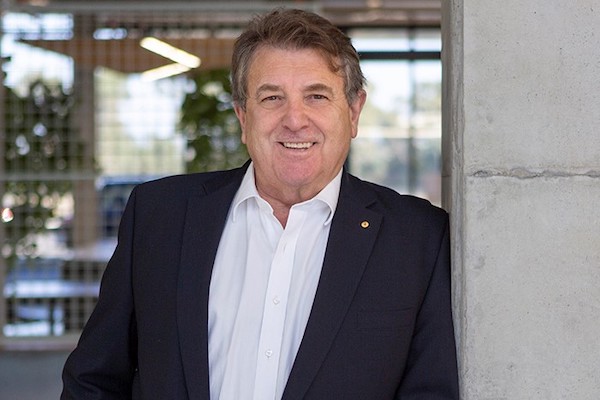Renewable Energies Without Natural Gas
Energy is to our modern lifestyle what water is to our life. One cannot be sustained without the other. As governments around the country move to ban new gas installations, Paul Bonsak from IAPMO Oceana argues that gas should be thrown a lifeline as part of our energy future.
Wood and gas have provided that vital energy for millennia and centuries respectively. Gas has been used since the late 1700s. The gas that was used was called ‘Coal Gas’. Made from coal, it was gas with a chemical composition of mainly hydrogen mixed with methane, carbon monoxide and ethylene. Some of the world is looking at turning back the clock, though in a more environmentally friendly way and replacing natural gas with hydrogen rather than hydrogen with natural gas.
Natural Gas has played a massive part in providing safe and efficient energy to the world population. Gas transformed our ability to be warm, to cook, and to produce goods. Yet, for some reason, governments especially in Victoria and the ACT, and some municipal councils in NSW, have decided that coal-fired power plants producing electricity are more beneficial and environmentally friendly than natural gas. Well, at least that is the message they appear to be sending to an increasingly confused public.
Paul Bonsak.
GAS IS A VITAL ECONOMIC CATALYST
Governments are playing a bit ‘fast and loose’ with an industry that has served the community and economy very well for generations. The significance of the gas industry in terms of jobs and economic activity should not ever be underestimated. Policy decisions which have the effect of significantly disrupting that industry need to be made with caution, and with due regard to the potential economic and community impacts.
The following statement comes from the Australian Government website:
“Most of our electricity is produced from burning black and brown coal at large power stations. Natural gas is the third highest energy source in Australia (after oil and coal). It is used by power stations for electricity generation, factories for manufacturing, and homes for heating and cooking.”
Natural gas is therefore clearly considered to be a very important and significant part of Australia’s energy supply, yet its future is in serious doubt.
Gas is also a massive contributor to Australia’s economy. A study prepared by the Australian Economic Advocacy Solutions for the Australian Gas Industry Trust (AGIT) has shown that the gas industry:
- directly supports over 165,000 full-time equivalent (FTE) jobs;
- supports approximately 47,000 businesses, ranging from offshore technicians in the northwest of WA to gas fitters and gas retailers in the suburbs of the country’s biggest cities; and
- a further 95,000 jobs nationally are indirectly supported by the supply chain.
In total, this equates to over 260,000 jobs across Australia which are directly or indirectly reliant on natural gas. And these jobs are well paid, high-value jobs, attracting an average annual salary of $90,200 compared to the national average of $67,902.
The significance of the economic contribution made by the gas sector was further highlighted in the Economic and Employment Contribution of the Australian Gas Industry Supply Chain 2020-21 study. The study found that natural gas:
- adds $556 billion to the Australian econmy; and
- contributes $18.2 billion into Federal, State and Local governments via taxes and excises, etc.
MAKING A REAL DIFFERENCE OR EMISSIONS SHIFTING?
Most of the natural gas produced in Australia is not used domestically. It is sold and utilised offshore. This situation is perplexing and confusing for Australian consumers and gas industry participants. The climate does not recognise national borders, and banning gas use domestically yet producing it by the container ship load and having someone else burn it elsewhere in the world will make no difference to worldwide carbon emissions. Call me cynical if you like, but it is hard to see that by adopting this approach Australia is just shirking our responsibilities, and denying Australians access to affordable, clean, natural gas just so we can pretend that we have hit our goal of reducing our carbon emissions as agreed under the Paris Agreement.
GLASS HALF EMPTY
The whole world is racing to decarbonise their energy sectors. And there are some very positive developments in terms of renewable energy generation, and about how it can provide an increasing share of the energy requirements of modern economies. However, that is only a part of the story. For example, a recent study by consulting firm McKinsey and Company, The McKinsey and Company Energy Review 2022, states:
“The world’s energy diet is changing. According to McKinsey’s newest projections, renewables could produce more than half of the world’s electricity by 2035, at lower prices than fossil-fuel generation. The resulting lowering of electricity prices, along with the falling cost of electric equipment and more stringent greenhouse-gas (GHG) emission regulation is expected to boost consumption of electricity in sectors, such as passenger vehicles and space heating, where fossil fuels have long been the standard energy source.
… Promising opportunities to go electric can be also found in the world’s factories and industrial parks. The financial and environmental benefits for industrial companies of using electricity instead of fossil fuels are increasing. Today, about 20 percent of the energy consumed in industry is electricity. The time has arrived for industrial companies, supported by policy makers and utilities, to plan for the adoption of electric technologies for their current fuel use.”
As positive, and likely accurate, as these predictions are, the glass is still half empty – at least. The McKinsey report claims that “renewables could produce more than half of the world’s electricity by 2035, at lower prices than fossil-fuel generation”. This statement begs the question: What about the other half? What energy source will provide that other half? What will be the costs of delivering that other half? What will be the impact of this on businesses and jobs?
WHY PUT ALL OUR EGGS IN ONE BASKET?
The move away from gas, at a policy level, is being accompanied by a push to electrify everything in sight. The supply, costs, reliability, and associated employment impacts of this transition are manifold and significant and require much more careful consideration than they are receiving now. Governments are very focused on setting targets, which, as we all know, is the easy part. Achieving them, in a way which is sensible and fair, is the hard bit.
In this context, Australia’s former chief scientist Alan Finkel said recently “binary choices” between renewable gas like green hydrogen and electrification are not required, and both sources of clean energy will be needed in large volumes in the decades ahead.
Keeping our energy options open, rather than closing them off as some states are doing with gas, is going to be the key to getting this right. Let us learn from those who have gone before us. Many countries in Europe have identified their energy needs and have addressed them. The USA is also focusing on their sustainable energy requirements and are investigating other sources of energy including nuclear.
Europe is far more advanced than the US and Australia in terms of energy transition. The conflict in Ukraine has forced their hand as Russia has turned off the gas supplies to Europe. European countries are introducing a multifaceted approach to supply energy to their population. These energy sources will include natural gas, hydrogen at times blended with natural gas, wind, solar and nuclear energy. They don’t want to be reliant on one source of energy.
Australia can become a renewable energy economy without natural gas, but it will bring with it costs, risks and compromises. There are several direct ramifications arising from removing natural gas from the energy mix.
Firstly, having only one supply or type of energy is a major concern. It creates risks – community health risks, economic, commercial and investment risks, even national security risks. If something happens to our electricity, we then have no supply of energy.
The existing network capacity should be preserved for powering the things that can only be powered by electricity. Australia’s existing network capacity is already stretched, especially at peak times, and where short demand spikes occur, demand already exceeds the capacity of the network.
Energy costs are also a key issue which must be considered carefully in the transition. Having only one source of energy supply eliminates competition, and less competition is rarely good for consumers in terms of price.
Both electricity and gas prices are increasing in Australia. The recent large increase in electricity prices has been blamed on a range of factors – war, environmental impacts, etc. However, it is difficult to know where the true costs lie and profits are being accrued, especially when you consider that over the past year the retail price increased domestically by 25%, and by 70% for business, yet the wholesale price decreased by 60%.
There has also been a significant increase in the price of natural gas. This, also, has been blamed on war and environmental factors. I have also been told it is because we use parity with Europe. Amazing when our gas comes from Australia, from our own gas reserves!
A HIGH-VALUE STRANDED ASSET?
A final point on what is at stake in the current discussion about the future of gas relates to gas network infrastructure. This network, especially in a state like Victoria which has one of the largest and most sophisticated underground gas networks in the world, is a high-value and hydrogen-enabling asset. The Victorian network is valued at more than $4.2 billion, but its potential value as a storer and transporter of green hydrogen is incalculable. Are we really going to abandon consumers, effectively forego the hydrogen opportunity, and leave that asset stranded? One of the great challenges Australia faces with respect to energy policy is the changing and inconsistent policy landscape. Governments are banning gas on the one hand and exporting it on the other. In Victoria, in July the government announced a ban on new gas connections, and in August announced it was extending the Loy Yang coal-fired powerplants life to produce electricity for the next 12 years. Are we really replacing natural gas with coal even though coal has carbon emission doubling that of natural gas?
Can we transition to renewables without natural gas? Yes, but we need more options, not fewer. Keeping Australia’s energy options open is key to the best possible transition. The long-term and broad transition pathway to net zero emissions is inherently uncertain. Policy decisions must allow scope for adaptation to new information, and for different decarbonisation pathways to emerge as their relative economic and technical feasibility becomes clearer over time. Recent experience in the US and Europe has taught us that the cost and technical feasibility of various technologies will change, possibly dramatically, as will investment trends, social licence, and consumer preferences.
The challenge lies in making the right choices at the right time. Long term success depends on identifying the right measures, or a combination of actions and changes, which will enable Australia to meet its emissions reductions targets and position the nation for a long-term, zero carbon future.
The way forward is to take advantage of current low emissions opportunities, while preserving our ability to take advantage of emerging opportunities, such as hydrogen. We must have our leaders make the right decisions for Australia, ensuring our industries have the resources they need to prosper for all of Australia to prosper.
Paul Bonsak is Managing Director of IAPMO Oceana. Visit iapmooceana.org


